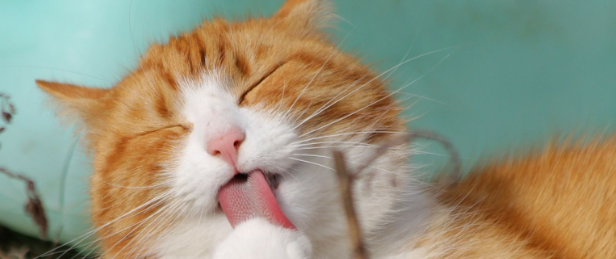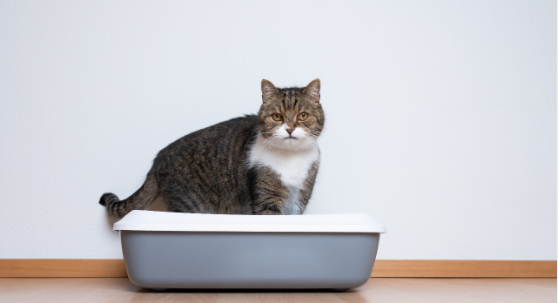The Truth About Orange Cat Gender
Orange cats are a popular and beloved pet choice for many people. Their bright, vibrant coats make them stand out, and their playful personalities make them wonderful companions. But have you ever noticed that most orange cats you encounter are male?
This observation has led to a common belief that all orange cats are male. However, is this really the case?
Are all orange cats male?
This question has been asked by cat enthusiasts for years, yet the answer is not as straightforward as one might think. The idea that all orange cats are male stems from an interesting genetic quirk that affects how coat color is inherited in felines. Generally speaking, coat color in cats is determined by genetics; more specifically, by the presence or absence of certain genes.
In the case of orange cats, their distinct hue is determined by the O gene which produces an enzyme called Tyrosinase that creates pigment. However, things get a bit more complicated when it comes to determining whether an individual cat will have an orange coat or not.
The Genetics of Orange Cats
Coat Color Determination
The color of a cat’s coat is determined by its genetics. Genes are units of heredity that contain instructions for making proteins, which determine various traits in an organism. In cats, coat color is controlled by multiple genes that interact with each other to create unique patterns and shades.
One group of genes responsible for coat color in cats is known as the “color genes”. These genes come in different versions or alleles, with each allele producing a specific color or pattern.
For example, one allele may produce black fur while another produces white fur. The presence or absence of these alleles determines the overall appearance of a cat’s coat.
Sex Chromosomes Role
In addition to the color genes, sex chromosomes also play a role in determining coat color in cats. The X and Y chromosomes are responsible for male and female sex determination, respectively. Female cats have two X chromosomes while male cats have one X and one Y chromosome.
Since the O gene responsible for orange fur is located on the X chromosome, it means that male cats only need one copy of the gene to be orange whereas females need two copies. This is because females inherit one X chromosome from their mother and another from their father, while males inherit only one from their mother.
The O Gene
The O gene is located on the X chromosome and controls the production of an enzyme called tyrosinase-related protein 1 (TYRP1). TYRP1 plays a critical role in producing pigment molecules called melanin which gives fur its distinctive colors.
When a cat inherits two copies of the dominant allele (O) from both parents, it produces orange pigment instead of black or brown pigment produced by other alleles. However, when a cat inherits two copies of recessive alleles (o) from both parents, it produces no pigment and has a white or cream coat color.
Overall, the genetics of orange cats are complex, and it takes multiple genes to produce the unique shades and patterns seen in these felines. The O gene is just one of many genes involved in determining coat color, but its location on the X chromosome plays a significant role in why male cats are more likely to be orange than female cats.
Male vs Female Orange Cats
Why Male Cats Are More Likely to be Orange than Female Cats
It is commonly believed that all orange cats are male, but this is not entirely true. In fact, approximately 80% of orange cats are male, while only 20% are female. The reason for this significant difference lies in genetics.
The gene responsible for producing orange fur is located on the X chromosome. Female cats have two X chromosomes (XX), while males have one X and one Y chromosome (XY).
This means that male cats only need to inherit one copy of the gene from their mother to develop an orange coat, whereas females need two copies (one from each parent) to express the trait fully. Since the likelihood of inheriting two copies of the gene is reduced in female cats, they are less likely to be orange compared to males.
How the O Gene Affects Male and Female Cats Differently
The O gene responsible for producing orange fur is a dominant genetic trait. This means that if a cat inherits even one copy of the gene, it will express it in its coat color. However, since female cats have two X chromosomes, they can inherit either one or two copies of the O gene.
If a female cat inherits only one copy of the O gene, it will produce an “orange mosaic” pattern where some areas are colored while others aren’t. This happens because only cells containing the X chromosome with the O gene will produce color.
In contrast, if a male cat inherits just one copy of the O gene on its single X chromosome, it will fully express this trait throughout its body and have an entirely orange coat. While both male and female cats can express an orange coat color under certain circumstances related to genetics and inheritance patterns through generations; females need more chances than males due to the way their chromosomes are structured.
Exceptions to the Rule
The Rare Female Orange Cat
While it is true that most orange cats are male, there are some rare exceptions where females can also have an orange coat. This is due to a genetic mutation that causes a female cat to have two X chromosomes with the O gene, instead of just one.
In these cases, the female cat will inherit the orange coat color from both parents, resulting in an orange coat. It is important to note that these occurrences are relatively uncommon and account for only 20% of all orange cats on average.
However, when a female cat does inherit the O gene from both parents, she will be just as likely as any male cat to pass on the gene to her offspring. This occurrence can lead to more than one orange kitten being born in a litter and can make for some exciting surprises for breeders and pet owners alike.
Genetic Mutations and Other Factors
While genetic mutations are one way for female cats to inherit an orange coat, there are other factors that can contribute as well. For example, exposure to sunlight or certain diets can cause changes in fur color over time by altering pigmentation levels. These changes may not be permanent but could explain why some female cats might appear more orange than others.
Other factors that can play a role in determining fur color include age, health conditions, and even stress levels. A sick or stressed-out cat may see changes in their coat color over time due to fluctuations in hormone levels or exposure to toxins.
While most orange cats are male due to their unique genetics and sex chromosomes, there are exceptions where females can also exhibit this beautiful fur coloration. Whether caused by rare genetic mutations or environmental factors like sunlight exposure or diet choices – it’s clear that nature has many surprises up its sleeve when it comes to feline genetics!
Other Factors Affecting Coat Colour
Orange cats may be genetically predisposed to their color, but this is not the only factor that affects their coat. The environment can also play a significant role in determining the shade and vibrancy of an orange cat’s fur. Sunlight exposure and diet are two environmental factors that have been shown to impact coat color in cats.
Sunlight Exposure and Coat Color
Sunlight is a vital source of vitamin D for cats, but too much sun exposure can cause changes in coat color. For example, excessive sunlight exposure may result in bleached or faded fur colors.
This effect is more pronounced in outdoor cats that spend long hours basking in the sun. On the other hand, insufficient sunlight exposure can also lead to changes in coat color.
Cats that spend most of their time indoors can develop darker coats due to reduced sunlight exposure. This effect is especially prominent during winter months when natural light levels are low.
Diet and Coat Color
Diet plays an essential role in maintaining a healthy and vibrant coat for all cats, including orange ones. A balanced diet rich in protein, vitamins, and minerals helps maintain optimal hair growth and development.
Cats that consume a diet lacking essential nutrients such as protein or biotin may experience slow hair growth or even hair loss. This deficiency can lead to dullness or fading of the coat color over time.
Additionally, some pigments found in certain foods such as carrots, pumpkin, or beetroot can also affect a cat’s coat color. These pigments may enhance orange tones on feline fur when consumed regularly as part of a balanced diet.
While genetics play a significant role in determining an orange cat’s fur color, it is important not to overlook environmental factors such as sunlight exposure and diet. As responsible cat owners, we should strive to provide our feline companions with a well-balanced diet and adequate sun exposure to maintain a healthy and vibrant coat.
Conclusion: Appreciating Our Feline Friends
Throughout this article, we have explored the fascinating world of orange cats and their gender. We began by examining the genetics behind coat color and how sex chromosomes play a significant role in determining the color of a cat’s fur. The O gene responsible for orange fur is located on the X chromosome, which means male cats are more likely to be orange than females.
However, we also learned that there are rare cases where female cats can have an orange coat due to genetic mutations or other factors. It is clear that many factors can influence a cat’s coat color beyond genetics.
Environmental factors such as sunlight exposure and diet can also play a role in determining the color of a cat’s fur. While not all orange cats are male, it is still important to appreciate our feline friends for their unique personalities rather than solely focusing on their coat colors or genders.
Whether your cat is black, white, orange, or any other colour in between, they bring joy and companionship to our lives that should be celebrated regardless of their physical attributes. While it may be tempting to categorize cats solely based on certain physical characteristics such as their coats or genders, it is important to remember that every cat is an individual with its own unique personality and traits.
As pet owners and animal enthusiasts alike, we should strive to appreciate our feline friends for who they are rather than what they look like. Orange cats may be fascinating creatures with interesting genetics behind them but ultimately what matters most is the love and companionship they provide us each day.




